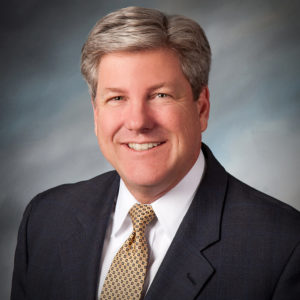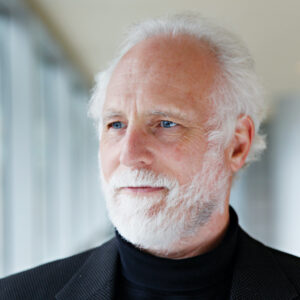
By Knut A. Rostad
Originally posted on Advisor Perspectives, March 13, 2018
“No thinking man can believe that an economy built upon a business foundation … can permanently endure without some loyalty to that (fiduciary) principle.”
Justice Harland Fiske Stone, Harvard Law Review, 1934
The late Dick Wagner, a pioneer in our industry, admonished us in his seminal essay, To Think Like a CFP. In his spirit, I frame this discussion, “To Think Like a Consumer.” That is, what do consumers want to know about their CFP? My reply, “Tell me why you’re qualified, what you do and why. Tell me the costs I pay. Your conflicts. Tell me plainly. And please, no legalese. No BS.”
Certainly, this sounds too simple to be true. Wrong. The CFA Institute’s 2016 research publication, From Trust to Loyalty, suggests it’s on target. It finds clarity and transparency on fees and disclosing and managing conflicts ranked very high among investors – so much so that fee transparency beat competitive returns as a concern.
Here’s the rub. CFPs mostly work in brokerage sales organizations where these things, like transparency and disclosure, are hard – if not impossible. An Institute survey released on March 8 revealed that just 15% of CFPs are fee-only. A full 85% reported full or partial commissions or no methods. This is fairly consistent in different parts of the country.
The CFP Board set out in its proposed standards fiduciary duties for all advice. Its statements are clear and strong. This is an important step. But alone, it falls very short. Why?
It’s about conflicts. The duty of loyalty is about avoiding conflicts. Professor Arthur Laby notes conflicts and conflicted sales dominated much thinking of the framers of the Investment Advisers Act of 1940.
Carlo V. di Florio, then director of the SEC Office of Compliance and Inspections, said in 2012, “Conflicts of interest can be thought of as the viruses that threaten the organization’s well-being. … and if not eliminated or neutralized, even the simplest virus is a mortal threat to the body.” A mortal threat, like the Monkeypox virus.
The importance of conflicts underscores why the CFP board’s core premise on conflicts and compensation matters.
The framers of the Advisers Act were concerned with conflicted sales and stressed the need to eliminate conflicts. The DOL Rule’s premise was that conflicts are toxic and hidden BD commissions a chief toxin. Transparent fees are not a toxin. The DOL distinguishes fees from commissions.
In sharp contrast, the Board advocates compensation neutrality and pledges allegiance to commission and fee equality as fundamental to its standards. This premise is a direct rejection of fiduciary convention.
The implications of this rejection are plain. For the last 10 years, the Board has said to investors that CFPs are trusted advisors – without providing guidance on avoiding conflicts or mitigating conflicts harms.
Without guidance, brokers (approximately 85% of CFPs) rely on industry training, culture and experience. BDs live by suitability rules. And these are the home field to hidden conflicts of interest, as the White House report revealed in 2015.
Yet, evidence argues that brokers already believe they are fiduciaries. A survey cited by the CFP Board showed that, among investment professionals, just 16% would “expect their advice might be different” under a fiduciary standard. This speaks volumes.
So, the question is whether there’s a reasonable basis to believe the proposed standards will result in fiduciary advice. How can that be when there is no rebuttable presumption that the CFP mark means fiduciary conduct, no urging CFPs to avoid conflicts over disclosing them, no guidance on avoiding or mitigating conflicts, no required written disclosures, client consents, and no clues on enforcement?
There’s no question the CFP Board members are acting in good faith to move financial planning to professionalism. There is also no question many have fiduciary pedigrees. They’re well-known and respected. And there is also no question that becoming a profession is a journey. And, as we are often reminded in private, that members feel they are pushing back against great pressures from the brokerage industry. Still, questions remain.
To start, why reject a core premise of fiduciary duties? Why are CFPs left in the lurch with no Board guidance to help them avoid or mitigate conflicts after 10 of years holding CFPs out as trusted advisors?
The Board says setting standards is a journey. Fair enough. Yet, it offers no indication where standards are in this journey after almost 50 years. The financial planning profession will observe its 50th anniversary next year, going back to the meeting of 13 industry leaders Loren Dunton convened in 1969.
Since then leaders have fought vigilantly for a profession with real fiduciary duties – names like Fain, Blankinship, Hopewell, Kinder, Hughes and Wagner.
Then think what it meant in 2005 when the FPA challenged the SEC in court over the so-called Merrill Lynch rule. Why directly battle the heart of brokerage industry and the federal regulator of its own RIA members, many asked? The FPA’s crisp discussion of the challenge seems ancient history today.
Straight answers flowed easily. Then FPA President James A. Barnash said about consumer protections under the Advisers Act, “Starting to look like Swiss cheese.” The line between incidental advice and financial planning is “As clear as mud.”
In this spirit, the CFP board should “remove the mud” and adopt these measures:
- Re-insert the rebuttable presumption.
- Urge CFPs to avoid conflicts over disclosing them.
- Insert clear, concrete and verifiable guidance on mitigating conflicts.
- Require written disclosures, consents and agreements.
- Require transparency and clarity on fees and conflicts.
What better way to observe our 50-year journey to professionalism and acknowledge the raw courage of some earlier and present leaders. Remove the mud!

